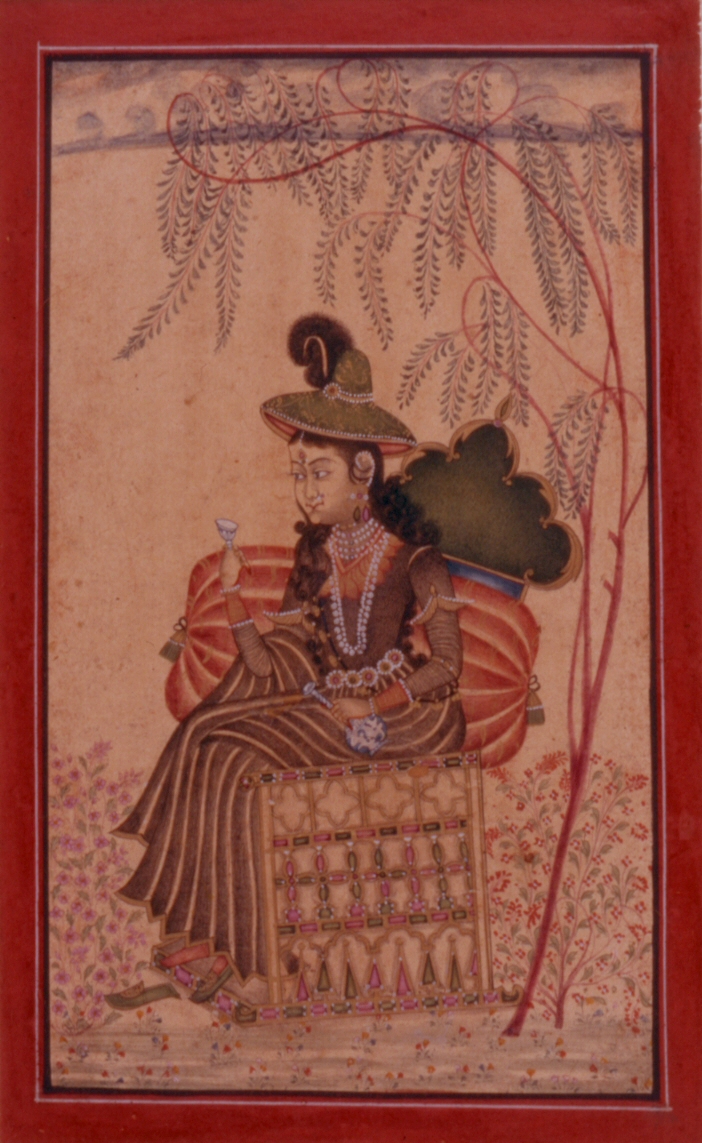Lady in European Attire
(India, Nepal, and Tibet)
The painter of this image gave particular attention to the details of the woman’s European dress, especially her elegant bodice and wide-brimmed hat. The European hat was a point of attention in South Asia from the 16th century on, when Europeans began to be seen there in greater numbers. The high-back chair was also a noted European novelty, as the South Asian elite sat on carpets and low platforms; the artist focuses on the elaborate nature of the throne chair. The exaggerated aspects of the woman’s dress and throne suggest that this image might have been intended to inspire laughter.
Provenance
Provenance (from the French provenir, 'to come from/forth') is the chronology of the ownership, custody, or location of a historical object. Learn more about provenance at the Walters.
John and Berthe Ford, Baltimore [date and mode of acquisition unknown]; Walters Art Museum, 2002, by gift.
Conservation
| Date | Description | Narrative |
|---|---|---|
| 12/28/2017 | Treatment | examined for exhibition; stabilized |
Geographies
India, Hyderabad (Place of Origin)
Measurements
H: 8 1/4 x W: 4 15/16 in. (20.96 x 12.54 cm); Framed H: 20 1/8 × W: 15 3/16 × D: 1 1/4 in. (51.12 × 38.58 × 3.18 cm)
Credit Line
Gift of John and Berthe Ford, 2002
Location in Museum
Not on view
Accession Number
In libraries, galleries, museums, and archives, an accession number is a unique identifier assigned to each object in the collection.
In libraries, galleries, museums, and archives, an accession number is a unique identifier assigned to each object in the collection.
W.913


